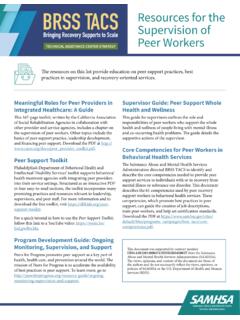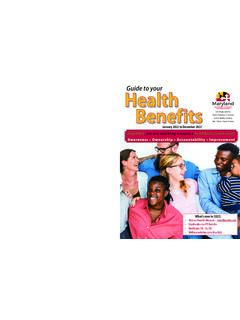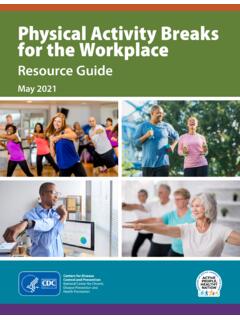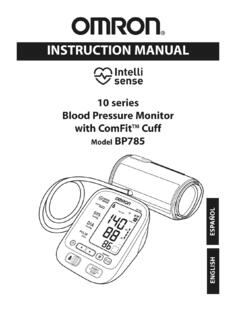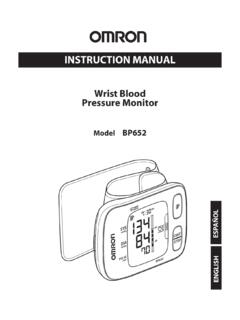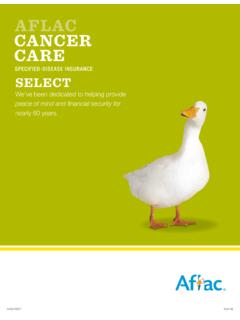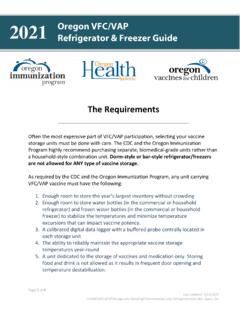Transcription of Disability Language Guide - Stanford University
1 Written by Labib Rahman and Reviewed by the Stanford Disability Initiative Board Disability Language Guide Photo Credit: Linda A. Cicero / Stanford News Service Image Description: Three students (a man carrying a flag, a man using a wheelchair, and a woman speaking with hand gestures) have a conversation while walking on a Stanford road. Language is dynamic and nuanced, changing at a rapid pace at along with social norms, perceptions, and opportunities for inclusion. The following, written by Labib Rahman and reviewed and approved by the Stanford Disability Initiative, is a starter Guide (non-exhaustive, non-definitive) for considering Disability equity (and practicing deference to individual experiences) in the words we use as an institutional community.
2 Published July 2019. Written by Labib Rahman and Reviewed by the Stanford Disability Initiative Board Words matter The words we use to describe individuals with disabilities matters. According to the World Health Organization, the Disability community is the largest minority group in the world: around 10% of the world's population, or 650 million people, live with a Disability making the Disability community the largest minority group in the world. Although there is not a monolithic Language style preference shared across all the people who have a Disability , it remains important to use respectful and inclusive Language when communicating with or talking about people with disabilities. 1. Be mindful of the diversity in the Disability community Disability is diverse both in terms of conditions and the people who have them.
3 With all the differences in cultures, languages, genders, beliefs, and environments, remember that it is possible for two people with the same diagnosis or circumstance to feel completely differently about their Disability . 2. Ask individuals what Language they would like used to describe their Disability If someone is willing to disclose their Disability , it is best to ask them how they want you to refer to (or not refer to) their Disability . In addition to word choice, it is important to note that people may want different levels of disclosure. In other words, some people may feel more comfortable discussing their disabilities than others or may feel differently about disclosure in different situations. 3. Learn about the two major linguistic preferences to address Disability Putting the person first, as in people with Disability , is called people-first Language .
4 It is commonly used to reduce the dehumanization of Disability . Another popular linguistic prescription is the identity-first Language , as in disabled people. Many use this style to celebrate Disability pride and identity or simply because they prefer this. There is no unanimity on which is the more respectful style, it comes down to personal preference. One suggested middle-ground is to use these two styles interchangeably to acknowledge and respect the individual preferences of an exceptionally diverse group of people. Written by Labib Rahman and Reviewed by the Stanford Disability Initiative Board 4. Avoid condescending euphemisms Terms like differently-abled, challenged, and handi-capable are often considered condescending. By shying away from mentioning Disability , we may reinforce the notion that Disability is something of which to be ashamed.
5 The word special is a particularly entrenched because it can be used as a euphemism but also may be utilized technically ( , special education ). There is a desire to move away from this word. However, there is also acknowledgement that terms such as special needs are uniquely situated to introduce non-disabled parents and loved ones of children with disabilities to a rich and complex world of Disability access, inclusion, accommodation rights, and systems of support. 5. Avoid offensive Language even as a joke Examples of offensive terms: mad, freak, psycho, retard, lame, imbecile, crazy. Don t call someone a retard or retarded if they do something silly, unwise, thoughtless, short-signed, dangerous, ill-advised, frustrating, etc.
6 Other examples include asking someone jokingly, Are you deaf/blind? Can t you see/hear? 6. Describing people without disabilities Do not use words that suggest undesirable stereotypes of people with Disability . When describing people without disabilities, don t use terms like normal, healthy, able-bodied. Instead, use non-disabled or people without visible disabilities. Such terms are more accurate, because we often cannot tell whether someone has a Disability just by their physical appearance. 7. Not all disabilities are illnesses and not all people with disabilities are patients People with disabilities can be healthy even if they have a chronic condition like diabetes. It is only appropriate to refer to someone as a patient in a medical setting, regardless of their Disability status.
7 It is also important to recognize that wellness is an individual endeavor: people with disabilities experience wellness , physical/health fitness, and recreational activities at myriad levels. No person, regardless of ability or desire to participate in wellness activities, is more or less deserving of dignity and respect. Written by Labib Rahman and Reviewed by the Stanford Disability Initiative Board 8. People with disabilities simply living their lives do not exist to inspire others Successful disabled people should be celebrated in much the same way as successful non-disabled people are. Depicting everyone with a Disability in unsophisticated, feel-good ways for touching the hearts and opening the minds of non-disabled people is both objectifying and degrading.
8 In her TedX talk, Stella Young dubbed this concept inspiration porn. 9. Do not mention someone s Disability unless it is essential to the story It is OK to identify a person s Disability when it is necessary for clarity or provides important information. For instance, Virali, who uses a wheelchair, spoke about her experience with using accessible transportation is totally fine, since it adds a new layer to the story. In other instances, the Disability may be irrelevant. For example, do not say, Charles, who has a congenital Disability , wants more sugar in his caramel espresso. Now let s shed some respectful light on a few commonly-used terms. Commonly-used Terms Preferred Language Able-bodied, Normal Use non-disabled or person without Disability .
9 Referring to someone who does not have a Disability as a normal person implies that people with disabilities are strange or odd. Use normal only in medical/scientific context such as normal test result or normal growth. Abnormal Use atypical , disabled person or person with Disability . Written by Labib Rahman and Reviewed by the Stanford Disability Initiative Board Use abnormal only in a medical/scientific setting like abnormal curvature of bone. Avoid using the word abnormal to describe people. Addict, Alcoholic, Junkie Use someone with a drug/alcohol addiction or someone with alcoholism. Addiction is a neurobiological disease which impaired control over drug use, compulsive use, and continued use despite harm and/or craving.
10 Use recovery and/or remission when someone is trying to get out their addiction. Blind Use blind for someone who has complete loss of sight. Use legally blind for someone who has almost complete loss of sight. Use limited vision, low vision, partially sighted, visually impaired for someone who is neither legally or completely blind. Note: Some people object to visually impaired as it characterizes the condition in terms of lacking. Written by Labib Rahman and Reviewed by the Stanford Disability Initiative Board Brain-damaged Use person with a brain injury. Defect, Defective Use person with a congenital Disability , person living with congenital Disability . When describing a Disability , avoid defect or defective as they imply the person is sub-par or incomplete.
